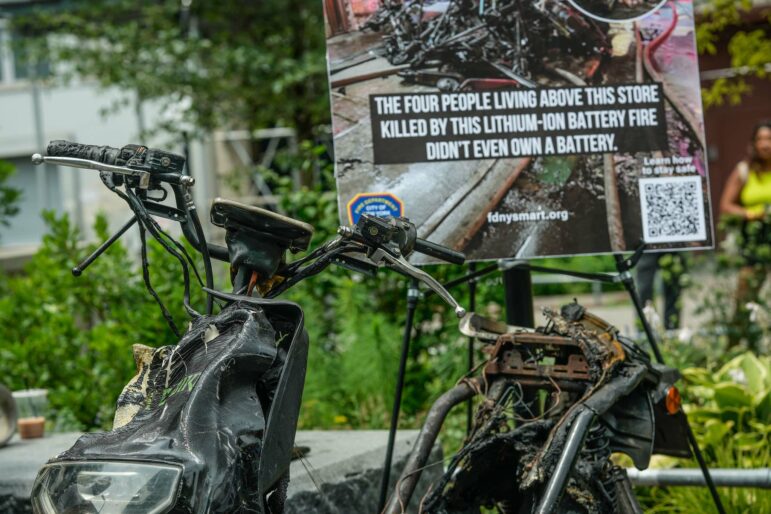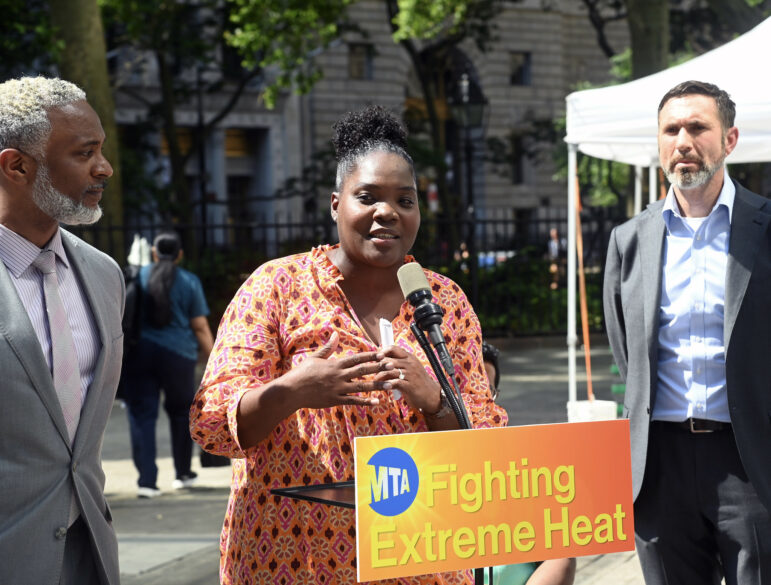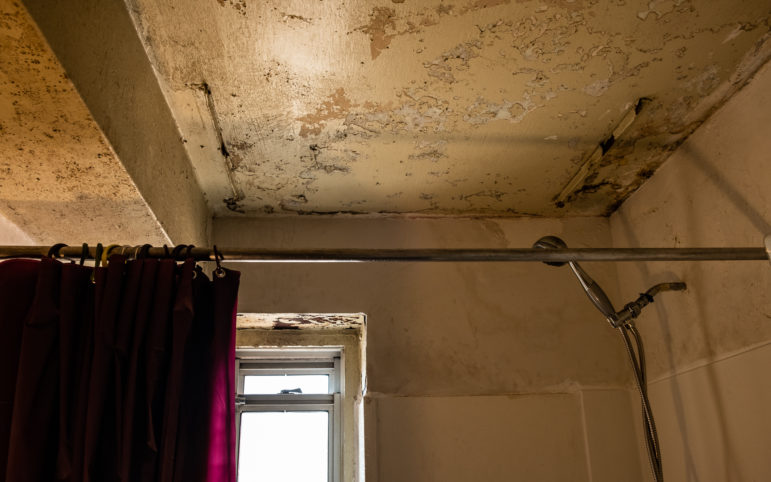“E-bikes are here to stay, and without a multipronged approach demanding action from the business community and individual stakeholders, along with local governments, no meaningful difference will be achieved.”

Michael Appleton/Mayoral Photography Office
A scorched e-bike on display at a press conference on July 22, where Mayor Eric Adams announced new safety charging stations in an effort to prevent fires.The rash of lithium-ion battery fires across the country has finally sparked Congressional action with the introduction of the Setting Consumer Standards for Lithium-Ion Batteries Act (H.R. 1797), requiring the Consumer Product Safety Commission to establish product safety standards for rechargeable lithium-ion batteries used in e-bikes and other micro-mobility devices.
Such legislation merely touches the surface of a larger enforcement problem. E-bikes are here to stay, and without a multipronged approach demanding action from the business community and individual stakeholders, along with local governments, no meaningful difference will be achieved.
Since the onset of COVID-19, when home deliveries to locked-down residents became an essential service, e-bikes have become ubiquitous in major cities like New York. The lithium-ion batteries that power the bikes have become the leading cause of fatal fires throughout the five boroughs.
According to New York’s Fire Commissioner Laura Kavanaugh, in just the past two years, e-bike batteries have caused approximately 500 fires and killed 24 people, and there are no signs of this trend slowing down. H.R. 1797’s main sponsor is New York Congressman Ritchie Torres of the Bronx, which experienced three e-bike fires in the first half of May 2024 alone.
But the dangers of lithium-ion batteries are hardly an “only-in-New York” issue. Municipalities from coast to coast have seen a surge in incidents where exploding batteries suddenly go ablaze and trap those inside the affected home or business.
In California, San Francisco saw 58 fires involving lithium-ion batteries in 2022, with an additional 41 fires counted in 2023. Meanwhile, the San Diego Fire-Rescue Department reported at least 32 e-bike battery fires since mid-March 2024, in addition to 104 fires in 2023.
Data from the International Fire Chiefs Association found more than 60 battery fires in Houston, TX during 2023, and 73 lithium-ion battery fires were investigated by the Phoenix Fire Investigations Task Force between June 2023 and February 2024.
Even the DMV—the District of Columbia, Maryland and Virginia—is not immune, with 17 fires reported in Fairfax County in 2023, and eight Washington D.C. fires in the same year.
This ever-growing scourge has led to a patchwork of rules and regulations as cities and states tackle the problem with their own array of legislation, fire code changes and more. There is certainly an appetite for action on the federal level, as H.R. 1797 easily passed the House with bipartisan support. At a recent event in Brooklyn, New York Senator Kirsten Gillibrand voiced her support for the federal safety standards outlined in the bill and pushed for its inclusion in the Fiscal Year 2025 National Defense Authorization Act (NDAA).
While developing and enforcing safety standards for rechargeable lithium-ion batteries can aid the fight against the fires they spark, it is far from enough to solve the issue. More actions need to be considered to fully put these deadly blazes behind us.
E-bikes are often used by delivery workers who are independent contractors living on an hourly salary. When battery issues arise, these price-conscious drivers frequently gravitate toward the cheapest possible option, whether that is a disreputable online seller or a secondary market flooded with foreign-based goods.
While putting stringent safety standards on new e-bike batteries is helpful, lawmakers will not be able to go into people’s homes to confiscate older, unregulated e-bikes and batteries.
The fact is, however, that lithium-ion battery imports in the U.S. roughly doubled for the third consecutive year in 2022, according to S&P Global—a period when 60 to 70 percent of global e-bike production occurred in China.
Those majority-foreign-manufactured models currently dominate the market and will continue to be sold from person to person at garage sales or on sites such as Craigslist.
So, while legislators at the federal, state and city levels debate and design the structures of their own interventions, more needs to be done to spread responsibility to all involved.
Local municipalities should mandate the creation of an insurance market that can handle e-bikes. For those used for commercial purposes, the e-bikes in the delivery fleet should be periodically inspected by the public authorities that might license operators of these motorized devices.
Further measures must also be taken on the federal level, as any lithium-ion battery standards must ensure that manufacturers are traceable and insured, if they want to do business in the U.S.
When deadly fires do occur, high-level investigations should take place. Just as the The National Transportation Safety Board (NTSB) is called in when a train derails, a ship crashes or when airplane parts fall out of the sky, there must be a body to oversee and investigate incidents involving e-bikes on a national basis, ensuring that whatever went wrong is not constantly recurring.
While Congress should be applauded for recognizing the importance of this issue and making attempts to tackle some of the root causes head on, it is going to take a concerted effort from all of us to put a lid on these growing fire hazards and save lives.
Michael P. Mezzacappa is a partner and general counsel with Coffey Modica LLP. Admitted to practice in New York, New Jersey and the District of Columbia, he is a trial attorney who has represented insurers, property owners and managing agents, manufacturers, construction companies, trucking companies and other professionals in cases based on some of the largest and most high-profile litigations, including fires and explosions.








